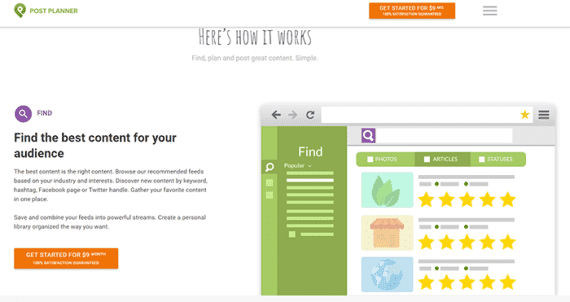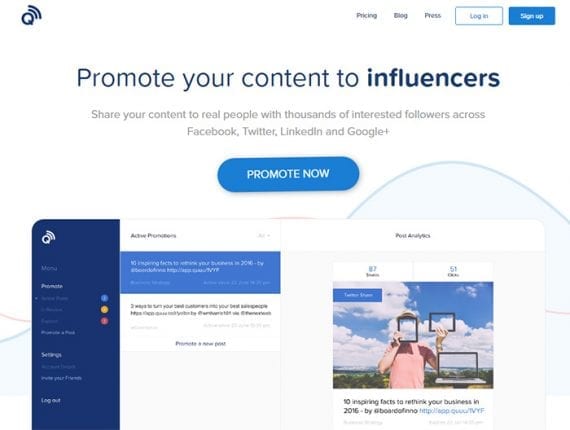A content marketing stack is a collection of software tools and technologies gathered for the express purpose of helping a business use articles, graphics, podcasts, videos, or similar to attract and keep customers.
At its core, content marketing relies on the principle of reciprocity and on building trust. If a business — such as an online store — provides helpful, entertaining, or informative content that has value, folks are likely to feel grateful for the content and recognize the business as an expert in the field.
When it does come time to make a purchase, those folks may be more likely to buy from businesses they respect and trust.
Content marketing can also be comparatively easy to produce. Even the smallest of businesses equipped with Google Docs, a blog, and a Facebook page, can create, publish, and distribute content that will attract, engage, and retain customers.
In fact, Google Docs, a blog, and Facebook taken together represent a basic or even fundamental content marketing technology stack, since they fall into the most elementary categories of necessary software solutions.
To these tools, there are many other applications that may make content marketing more effective. What follows are several categories of tools to consider for your content marketing technology stack.
Content Research
Your company’s business goals and objectives should guide your content marketing research to an extent. But it is unlikely that it will point you to the specific topics you’ll need to cover.
As an example, consider a brick-and-click retailer that sells large animal grooming supplies, accessories, and supplements — think horse shampoo to make a colt’s coat shiny or vitamins for a pet pig.
This retailer has a goal of increasing large animal supplement sales by five percent this year. It hopes to use content marketing to reach this aim. This sort of goal might help a content marketer know whom to produce content for and give some hint about what kind of content to produce, but ultimately more research may be required.
In this category of software solutions, look for tools that will help:
- Identify customer needs (perhaps personas),
- Monitor social media and blogs,
- Generate concepts (keywords),
- Establish content schedules and calendars,
- Identify possible distribution channels,
- Reuse existing content or data.
Solutions in this category might include Google AdWords Keyword Planner, Google Drive research, Post Planner, gShift, BuzzSumo, and Rival IQ, to name some.

Post Planner is an example of a software solution you might use for content research. There are many software solutions you could pick. At this layer, the aim is to find tools that help you decide what to write about or make a video about.
Content Creation
Whether you’re composing a blog post, recording a podcast, or shooting video, you’re going to need software.
For written content, you might use a word processor like Google Docs or a more specialized solution like the Hemingway Editor. A tool like Grammarly can help with spelling and punctuation. There are, without exaggeration, hundreds of other apps you might choose.
For audio content, you will need a microphone, digital audio recorder, and audio editing software like Adobe Audition, Audacity, or similar. You may also want a tool like Skype, Ringr, or Google Voice to record conversations or interviews. Here again, there are many options.

Adobe Audition is audio editing software. If you create podcasts or videos, it or a solution like it may be part of your content marketing technology stack.
For video editing, Adobe Premiere is, perhaps, the best-known tool, but there are many others to consider.
The secret is to find content creation tools you feel comfortable with. If you are not going to create all of your content yourself, you might use a service for finding freelancers, such as Contently, Guru, or Upwork.
Publication and Distribution
The content publication and distribution layer of your content marketing stack includes software solutions that range from having your own place to publish or host content to how you will broadcast content around the web.
For example, you may want a blog or even your own online journal running on a popular content management system, like WordPress, Ghost, or similar. You could host podcasts on SoundCloud and videos might live on YouTube, Vimeo, Brightcove, or others.
Your business’s social media accounts will also play a role in distributing content, since you can post links or embed rich media on Facebook, Twitter, Instagram, and more.
There are even software tools to help you broadcast content. Again, Contently is an example, as is Uberflip, or you might also use a tool like Buffer, dlvr.it, or Hootsuite, to name a few of many applications, that can help you distribute content.
Think about how you will host content and how your audience of potential customers will discover it.
Content Optimization
To further help folks find your content, you can optimize it for discovery and consumption.
At this point in your content marketing technology stack, you could be employing web technologies as frequently as you’re using a software solution.
For example, you might ensure that your content pages use structured data, like JSON-LD. You could use Accelerated Mobile Pages to attract more mobile readers. Or you might include email markup in your promotional messages. Don’t forget about RSS feeds either since those could be used to feed Feedly or iTunes.
In addition to these technologies, you could employ a tool like Screamingfrog, PowerMapper, or Moz, to help with search engine optimization and web accessibility. The goal, of course, is to help potential customers find the content you make and have a good experience reading or watching it.
Content Promotion
One of content marketing’s many benefits is that it does not necessarily require paid media placement. But this doesn’t mean that you cannot promote content. If it makes sense for your business, you might even buy ads that link to articles, videos, ebooks, or similar.
You could do this with any pay-per-click platform — Google AdWords would work just fine. Or you could find specialized tools. One Spot can help create ads for your content. Zemanta, Outbrain, and Taboola can all help with content promotion, including native ads and placement. Quuu Promote will suggest your content to folks looking for things to share on the web.
Lots of companies will want to sell you advertising and placement. Use these companies wisely to help promote your content.

Quuu Promote will help place your content on social media, encouraging folks who are already looking for things to share to post your content.
Measurement and Analysis
Content marketing is iterative. Learn the sorts of content and distribution channels that are effective for your business and your goals. To do this, you’ll need some tools for measuring and analyzing content marketing campaigns.
This layer of your content marketing technology stack could include general analytics software like Google Analytics or Heap.
You might also try tools to track return on investment, like TrackMaven. Again, you have many options. Find an analysis tool that helps your business make good decisions about content creation and promotion.
Build Your Content Marketing Stack
Content marketing requires a way to create content and a way to publish that content. So your content marketing technology stack can be thin and still be functional.
As your content marketing campaigns increase in complexity, you can add to your technology stack. Any solution you include should make your content more effective.




